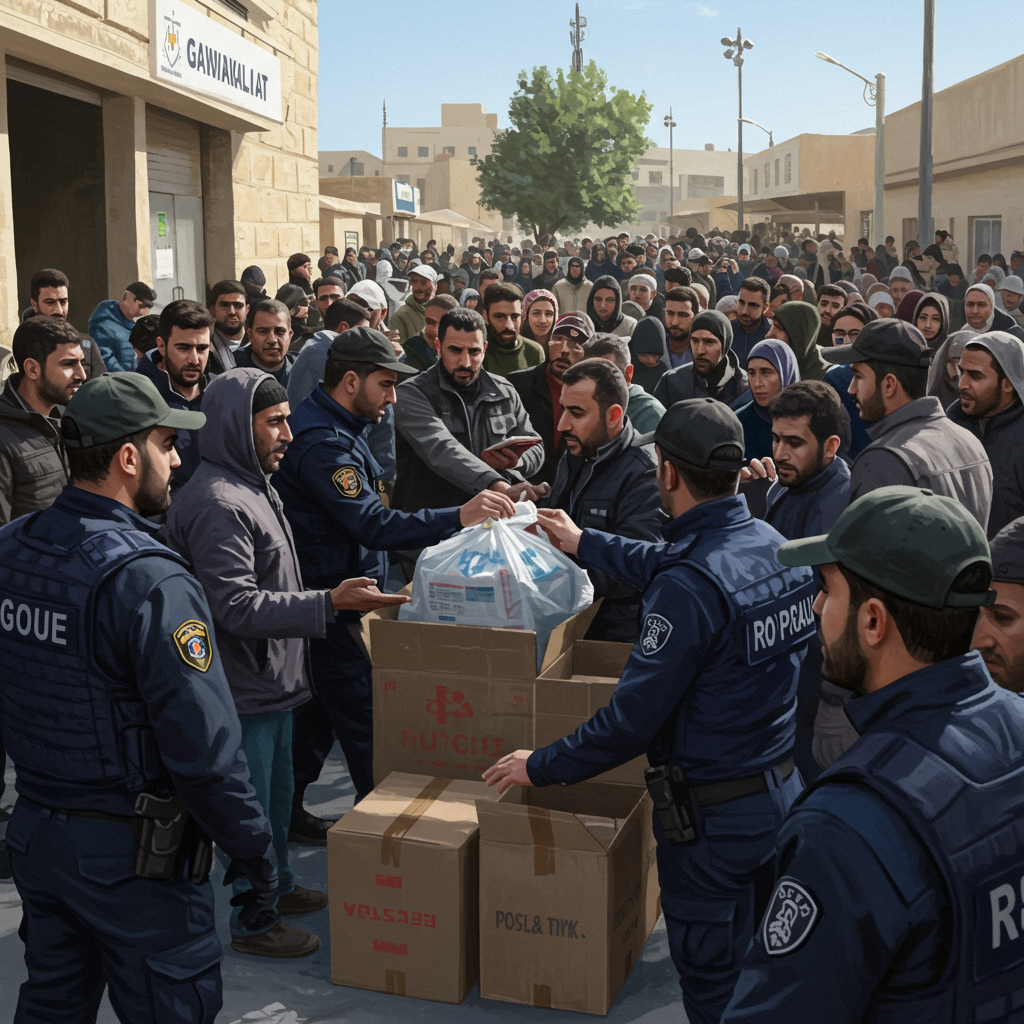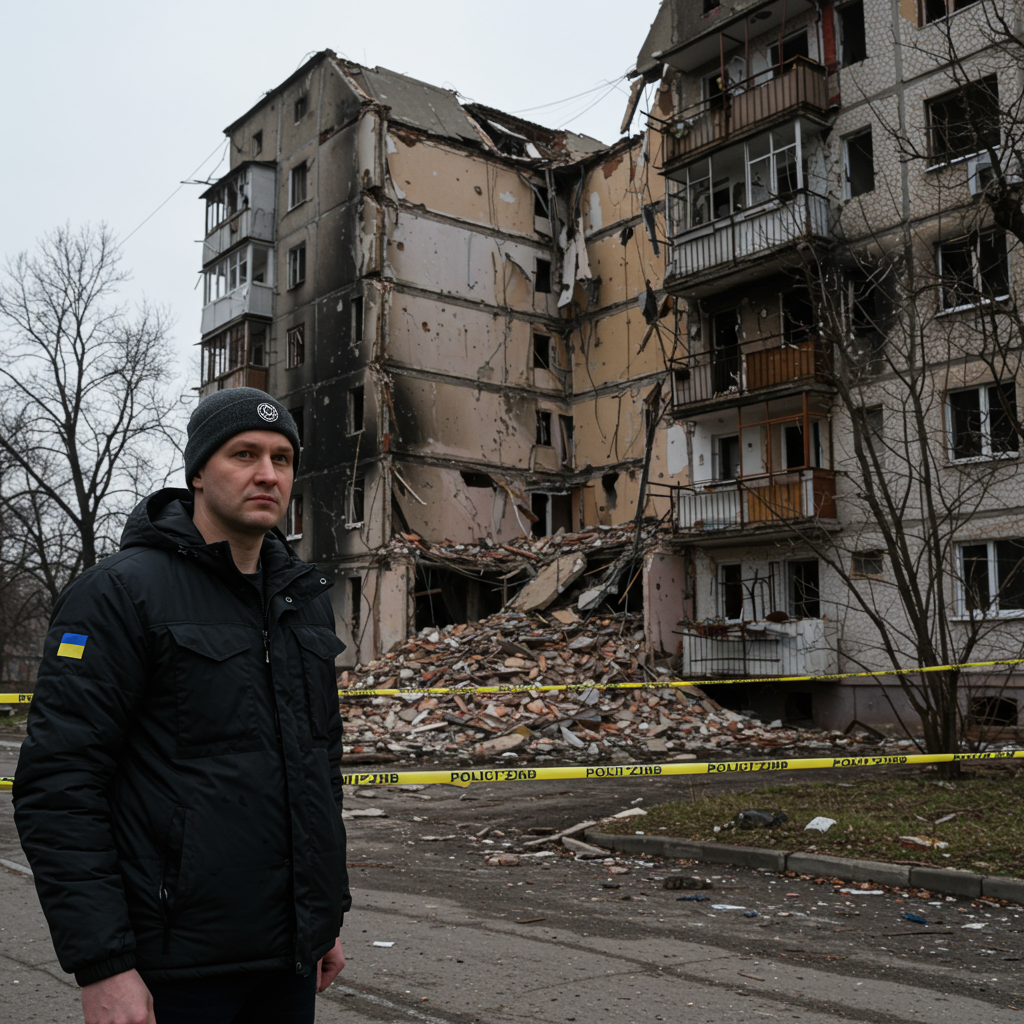Amidst the critical humanitarian situation in the Gaza Strip, a key organization delivering essential aid is vehemently challenging a report alleging excessive force. The Gaza Humanitarian Foundation (GHF) has issued a firm denial following an associated Press investigation. This report claimed American security contractors working for the GHF deployed live ammunition and stun grenades at crowded food distribution points in Gaza. The allegations raise serious concerns about the safety of civilians desperately seeking assistance.
Gaza Humanitarian Foundation Issues Forceful Denial
The GHF, an American organization with Israeli backing, oversees a vital new aid program aimed at providing food and humanitarian supplies in Gaza. On Thursday, the foundation released a statement directly refuting claims made in the AP report published the previous day. The AP story detailed incidents where contractors allegedly used lethal and non-lethal force as hungry Palestinians converged on aid sites.
According to the GHF, they initiated an “immediate investigation” upon being contacted by the Associated Press for comment prior to the report’s publication. Their conclusion stands in stark opposition to the AP’s findings.
“Based on time-stamped video footage and sworn witness statements, we have concluded that the claims in the AP’s story are categorically false,” the GHF statement asserted. The foundation maintained that “At no point were civilians under fire at a GHF distribution site.” This clear and unequivocal denial sets up a direct conflict with the detailed allegations presented by the news agency.
The Associated Press Investigation Details
The AP’s report draws heavily on accounts from two American contractors formerly employed by UG Solutions, the company hired to provide security personnel for the GHF operation. These individuals chose to speak anonymously, citing concerns about revealing internal company procedures. Their motivation, they stated, was a deep disturbance over what they perceived as dangerous and irresponsible practices occurring at the aid distribution points.
Contractor Accounts and Evidence
The anonymous contractors provided the Associated Press with a range of evidence, including text messages, internal operational reports, and a series of videos they filmed themselves at the sites. Their testimony included allegations of routine use of pepper spray to control crowds.
The contractors also claimed the security personnel used more severe measures. They reported seeing colleagues deploy multiple stun grenades. Videos obtained by the AP showed men, identified by one contractor as his fellow guards, throwing these devices into groups of Palestinians gathered in a narrow, fenced-off lane leading to a distribution site. The footage reportedly captured the flash of the grenades and the subsequent thick clouds engulfing the crowds.
Specific photographic evidence shared with the AP included images purportedly showing a woman injured in the head by a stun grenade and a Palestinian man crying after allegedly being tear-gassed.
Furthermore, the most serious allegations involved the use of live ammunition. The contractors described instances where gunfire was used. Crucially, the contractors asserted that the Israeli military was not present at the aid sites themselves or in their immediate vicinity at the time of these alleged incidents. This contradicts a key part of the GHF’s counter-explanation.
One particularly disturbing account from a contractor described witnessing two other contractors firing in the direction of Palestinians who were leaving a site after receiving food. He reported hearing English-speaking men making comments like “I think you hit one” and “Hell yeah, boy!” after a burst of gunfire. This contractor stated he saw a man among the departing group drop to the ground in the direction of the firing, although he could not confirm if the individual was hit or injured.
GHF’s Response and Counterclaims
In their statement, the Gaza Humanitarian Foundation offered alternative explanations for elements presented in the AP report. While they denied any firing at civilians, they addressed the sound of gunfire reportedly heard in some of the videos.
Denials and Explanations
The GHF claimed that any fire audible in the videos obtained by the AP originated from the Israeli military. They specified this fire came from “outside the immediate vicinity” of the aid distribution sites. However, the GHF statement did not provide any evidence to support this assertion that the firing was from the IDF.
The foundation reiterated its position that “no one was shot or injured” at their sites, and that any gunfire heard “was not directed at individuals.” This broad denial aimed to dismiss the AP’s accounts of injuries and direct firing incidents.
The GHF also raised concerns about the AP’s reporting methods. They described the decision by the Associated Press not to share the contractor-filmed videos with them before publication as “troubling.” Furthermore, the foundation suggested that the “primary source” for the AP’s story was a “disgruntled former contractor.” They claimed this individual had been “terminated for misconduct weeks before this article was published,” attempting to cast doubt on the source’s credibility.
Verification, Contradictions, and Lack of Transparency
The Associated Press addressed the GHF’s criticisms of its methodology. The AP explained that it had reached out to the GHF, its logistics subcontractor Safe Reach Solutions, and the security firm UG Solutions a week before the story was published.
AP’s Verification Process
While the AP described the contents of the contractor-filmed videos in detail via email to UG Solutions, it made a deliberate decision not to share the video files themselves. This measure was taken, according to the AP, specifically to protect the safety of their sources in the lead-up to publication.
The AP also outlined the steps taken to verify the contractors’ accounts and the video evidence. They stated they “thoroughly vetted” both of the contractors who provided testimony. To confirm the authenticity and location of the videos, the AP used geolocation techniques, verifying they were indeed filmed at the GHF aid sites. Furthermore, the news agency sought audio analysis from forensic experts. These experts concluded that the sound of gunfire in most of the videos came from within 50-60 meters, and in one instance, from within 115 meters – distances suggesting proximity to the sites themselves, potentially contradicting GHF’s claim of fire only from the distant Israeli military.
Conflicting Accounts and Site Access
The direct contradiction between the GHF’s assertion that the IDF was firing outside the vicinity and the IDF spokesperson Lt. Col. Nadav Shoshani’s statement to the AP that the army is “not within the sites” and “not in the immediate proximity to the sites” highlights a significant point of dispute with differing accounts of who, if anyone, was firing near the sites.
Notably, while the GHF broadly stated “no one was shot or injured,” their statement did not specifically address the contractor’s detailed account of witnessing colleagues firing towards Palestinians and hearing concerning remarks, followed by seeing a man drop.
Transparency has also been a challenge. The Associated Press reported that its journalists have been unable to visit the GHF aid sites. They have requested access multiple times but have been denied. The sites are situated within zones controlled by the Israeli military, limiting independent observation by journalists or other external parties.
The GHF did acknowledge taking action regarding one employee. In their statement, they mentioned having already removed a contractor who was seen “shouting” in a video published as part of the AP report.
The Complexities of Aid Distribution Security
The allegations, denials, and conflicting accounts underscore the immense difficulty and inherent risks involved in delivering humanitarian aid in an active conflict zone like Gaza. Ensuring the safety of both aid workers and the vulnerable populations receiving help is paramount, yet navigating the security landscape is incredibly complex. The reliance on private security contractors in such volatile environments raises important questions about oversight, rules of engagement, and accountability when incidents occur. The lack of independent access to sites further complicates efforts to gain a clear picture of events on the ground. Clarifying security protocols and ensuring full transparency are crucial steps for maintaining trust and ensuring aid can reach those who need it most, safely and effectively.
Frequently Asked Questions
What did the AP report say about aid contractors in Gaza?
The Associated Press reported allegations that US security contractors hired by the Gaza Humanitarian Foundation (GHF) used live ammunition and stun grenades at GHF aid distribution sites in Gaza. The report, based on accounts from anonymous former contractors and supporting evidence like videos and photos, described these actions occurring as crowds of Palestinians sought food aid.
How did the Associated Press confirm details about the Gaza aid site allegations?
The Associated Press stated they undertook several steps to verify their report. They vetted the anonymous contractors who provided the information. They used geolocation technology to confirm that the videos supplied were filmed at the specific GHF aid sites. Additionally, they commissioned forensic audio analysis which indicated that gunfire sounds heard in the videos originated from relatively close distances (50-115 meters).
Is it possible for journalists to visit the aid distribution sites run by GHF in Gaza?
Based on the Associated Press report, journalists have been unable to visit the Gaza Humanitarian Foundation’s aid distribution sites. The AP stated that despite requesting access numerous times, they have been denied. The article notes that the sites are located within zones controlled by the Israeli military, which restricts access for independent journalists and observers.
In conclusion, the serious allegations made by the Associated Press regarding the conduct of security contractors at Gaza aid sites run by the Gaza Humanitarian Foundation have been met with a strong denial from the organization. The GHF’s counterclaims and explanations conflict in part with the AP’s evidence and the statement from the Israeli military regarding their presence. With conflicting accounts and limited independent access to the distribution sites, achieving full clarity and accountability regarding security practices in this critical humanitarian operation remains a significant challenge.



